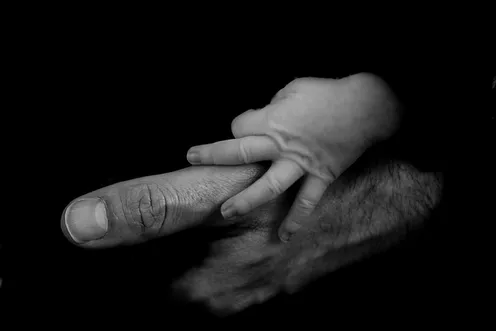Does Signing a Birth Certificate Establish Paternity in New York?
by SKU
Published: Apr 25, 2025 | Updated: Apr 25, 2025 |

Sharing is Caring!... Don't Care, Share & Save
Does Signing a Birth Certificate Establish Paternity in New York?
- Key Takeaways
- What is Legal Paternity in NY?
- Does Signing a Birth Certificate Establish Paternity in NY?
- Other Ways to Establish NY Paternity
- Paternity Scenarios for NY Families
- Life After Paternity is Established
- Can You Challenge Paternity Later?
- Why Establishing Paternity Is Crucial
- Navigating NY Paternity Law Wisely
- Conclusion
- Frequently Asked Questions
- Does signing a birth certificate establish legal paternity in New York?
- What is an Acknowledgment of Paternity in NY?
- Can paternity be established in court in New York?
- Can you challenge paternity after signing in NY?
- Why is establishing paternity important in NY?
- Do unmarried fathers have rights if not on the birth certificate in NY?
- Can a DNA test be used to establish paternity in NY?
Key Takeaways
In New York, signing a birth certificate alone does not automatically create legal paternity, particularly for parents who are not married to one another. You can establish legal paternity in writing with a Voluntary Acknowledgment of Paternity (AOP) form. This acceptance becomes conclusive after the passage of sixty days, unless you can show proof of fraud or duress. In New York, signing a birth certificate automatically establishes a presumption of paternity. If either parent does have concerns, they can challenge this presumption in court. When paternity is in question or disputed, further action may be required. A DNA test or court order will settle the matter. Regardless of the circumstances, establishing legal paternity is always important. It protects your child by ensuring child support, custody rights, inheritance, and access to healthcare or other benefits. If you have questions or face complicated family situations, seeking legal guidance in New York ensures your rights and your child’s future are well protected.
In New York, signing a birth certificate does not automatically legally establish paternity. The birth certificate is an official vital record, but it does not have the legal force of a judicial acknowledgment of paternity or a court order.
Hospitals still tend to pressure both parents to sign the birth certificate right after their child is born. For unmarried parents, state law mandates an extra layer of bureaucracy. If the parents are unmarried, they will have to sign an Acknowledgment of Paternity form.
They can petition for a court order establishing the father’s legal rights and responsibilities. Understanding this allows New Yorkers families to protect the status and future of their child in this state. Here’s what parents need to understand about each step and why they’re important.
What is Legal Paternity in NY?

Legal paternity in New York simply indicates that, according to the law, a man is recognized as a child’s biological father. It’s more than biology today. This is a huge step for fathers.
It enables them to acquire legal rights and responsibilities, such as child support, custody, and decision-making authority over their child’s life. In New York, family courts look to the issue of legal paternity to ensure that the right person is ordered to pay support.
They further determine who has a voice in the child’s upbringing and can make critical decisions regarding schooling and medical care.
Defining Legal Fatherhood
This means that in New York a legal father is not necessarily the biological father. He may in addition be the individual who adopted the child or who is named as the legal parent by a court.
Legal fatherhood gives you standing to pursue custody or visitation. You’ll have a say in all of the important decisions in the child’s life as well.
It’s not only about the rights they assert. Legal fathers are obligated to provide financial support for their child until the child reaches age 21.
They control matters of succession or if the child should require a new guardian one day.
Biological vs. Legal Parent Distinction

Simply being a biological parent does not confer legal rights in New York. When a child is born to a married woman, her husband is automatically presumed the legal father.
This is true even if he’s not the child’s biological father. Legal parentage can be established through adoption or by signing an Acknowledgement of Paternity at the hospital.
Otherwise, a biological father may lack legal standing even if he is the biological father without taking steps in court such as filing a paternity action.
Why Legal Paternity Matters
Establishing legal paternity allows a child to receive other important benefits, including Social Security, health insurance, and inheritance through their father.
It opens the door to educational opportunities and access to the family medical history. Along with that is this idea of being part of something.
Children understand their origins, and each parent earns a definitive place in the child’s life.
Does Signing a Birth Certificate Establish Paternity in NY?

In New York, there is a lot of misinformation regarding birth certificates and their implications for parental rights. A common misconception is that signing a birth certificate equates to permanent proof of paternity. However, this assumption is largely mistaken, as the reality under New York state law reveals that the birth certificate is just the first step in establishing legal parentage. Understanding these complexities is crucial for both parents, especially in paternity cases, where the determination of rights and obligations can significantly impact family relationships.
To protect the rights of children and parents, it’s essential to grasp how paternity is established in NY. The birth certificate holds legal weight but does not alone confer parental rights. Families must navigate the intricacies of paternity work, including the potential need for genetic testing or paternity court proceedings to solidify their legal relationship.
Ultimately, understanding the process of establishing paternity is vital for ensuring that all parties involved are aware of their rights and obligations. By recognizing the importance of a voluntary declaration or an acknowledgment of paternity (AOP), parents can avoid pitfalls and secure their parental bond, leading to more stable family dynamics.
1. The Voluntary Acknowledgment Form (AOP)
In New York, the Acknowledgment of Paternity (AOP) form is an important tool when unmarried parents have a child. It is the main way to legally establish paternity. Remember, this isn’t just a piece of paper; it’s a legal document!
Both parents normally sign it at the hospital immediately following the birth. It doesn’t need to occur at that time. The parents can sign this form any time before the child turns 21. When signed and filed with the state, the AOP provides legal paternity rights to the father.
The process seems simple: both parents read their rights, sign the form, and the state takes it from there. Actually, it’s not true, and it’s not that simple. After 60 days, that signature is locked in. A parent may only challenge it subsequently if there is evidence of fraud, mistake, or coercion to sign it.
That’s a short time frame, particularly in the hectic and stressful moments immediately following your child’s birth. That’s why it’s incredibly important to understand what you are signing and what it signifies.
2. Signing Creates Legal Presumption
In New York, signing a birth certificate does not merely give junior a name on the birth certificate. It does establish a legal presumption that the person named on it is the child’s father. This can determine matters such as custody, visitation, and child support.
If both parents agree, this presumption makes it easier for everyone involved to move forward with legal rights and responsibilities. This presumption isn’t set in stone. If either parent — or anyone else — disputes the identity of a child’s father, the law provides mechanisms to challenge it.
Perhaps it only arises in the context of a custody proceeding, or when an individual applies for benefits. In such instances, the courts tend to intervene and require greater evidence than the signed certificate.
3. Legal Duties Triggered by Signing
Child support is the major one. The law imposes a duty on the listed father to support the child. This is much more than cash assistance — it’s about access to health care, education and overall stability. If the father fails to take responsibility, the government can intervene to ensure support orders are made.
Failure to uphold these duties can lead to serious legal repercussions. In response, courts are able to garnish parents' wages, suspend their driver's licenses, or undertake other measures to ensure the child's needs are provided for.
It’s the biggest wake-up call yet for many of these dads. Being on the birth certificate is not just about rights; it creates tangible legal responsibilities.
4. When Signing Alone Isn’t Enough
If another man comes forward and says he is the father, the process becomes more contentious. Likewise, if at some point the mother contests the father’s identity, the courts should be able to intervene.
In circumstances where paternity is still in question, a DNA test or court ordered hearing may be required. This limitation means that the birth certificate, standing alone, isn’t always a silver bullet.
When families are at odds or the details are murky, New York courts require more convincing evidence. They require this to be done before providing full legal recognition of paternity.
5. Is the Signed Certificate Conclusive?
Unfortunately, a signed birth certificate isn’t always the end of the story. In cases of legal action, either parent and sometimes a third party may be able to challenge it. Perhaps the original registration was erroneous, or perhaps the father was intimidated into signing.
In such instances, the courts may require additional documentation or proof, such as results of DNA tests or witness affidavits. This interpretation best protects all parties’ rights, particularly the child’s.
This procedure helps make sure that the father listed is, in fact, the biological father. It ensures that all choices are made equitably.
6. Exceptions: When Signing Fails
Rarely, signing the birth certificate does not confer legal paternity. If an individual signed under duress, believing there was coercion or an use of threat, they may petition to contest the certificate.
The statute permits challenges even in the case of fraud. Mistakes, such as confusing documentation or a lack of comprehension about what’s being signed, can further complicate matters in the future.
These exceptions are a reminder of how important it is to understand the rules. When parents are empowered with knowledge about the implications of their signatures, they are better situated to protect their rights and their child’s future.
Other Ways to Establish NY Paternity
There are other ways to establish paternity in New York. Too many families are left with no choice but to require alternative routes. In New York, there are many legal ways to establish a child’s paternity. This can happen because parents aren’t married or have a falling out.
These measures provide families with additional options and safeguards under the law, regardless of how their family dynamic may be represented.
Seeking a Court Order
When there’s uncertainty or disagreement over paternity, either parent can seek to establish paternity. Once the child turns 18, he or she too has standing to bring a paternity petition in Family Court. This begins a judicial process where both parties are afforded an opportunity to present their case.
With the process involved to establish paternity, having an attorney can be beneficial to navigate the steps and ensure all documents are correct. The court considers evidence, such as photographs, text messages or financial support histories.
Sometimes, if the mother was married to someone else when the child was born, the law presumes her husband is the father. This too can be rebutted with sufficient evidence.
Using Genetic Marker (DNA) Tests
One of the more frequent tools used in these cases is the genetic marker (DNA) test. The court may require this test to be done if there is uncertainty. It’s a simple process: a cheek swab from the child and possible father.
Results are confidential and more than 99% accurate. DNA tests frequently resolve disputes that documentation is unable to address. They are extremely helpful when a person has made a mistake in signing the Acknowledgement of Paternity.
Within 60 days, that someone else can easily fix the error.
Understanding Paternity Test Costs NY
In New York, DNA tests usually run from $400 to $600. Cost can increase further based on which laboratory is used or if there is an involvement of court. Costs increase when additional relatives are tested.
It’s important that you use an accredited lab, especially if you need the results to be legally binding. This ensures that all New Yorkers receive reliable answers to their questions.
Paternity Scenarios for NY Families
New York families often face different situations regarding paternity, especially when it involves unmarried parents or same-sex couples. Understanding legal parentage is crucial, as it impacts various aspects such as child custody and support obligations. Clarity surrounding paternity is essential for navigating family law matters effectively.
Unmarried Parents: Establishing Rights
Unmarried parents, especially fathers, should note that paternity isn’t created automatically in New York. This puts fathers in a position where they hold no legal rights or responsibilities until paternity is established.
Other parents complete a Voluntary Declaration of Parentage (VDOP) in the immediate post-delivery period, establishing legal paternity for the father. This step is important for establishing custody rights as well as support rights.
If paternity is disputed, during paternity acknowledgement, DNA testing can be performed. A simple cheek swab can establish paternity with 99.99% certainty. A parent can only challenge a signed acknowledgment after 60 days have passed.
In order to do this, they need to show evidence of fraud, mistake or undue influence. A father who learns he may not be the genetic father can choose to petition for a DNA test through the court. This way, he can file for an adjudication of paternity.
Once paternity is established, dads can participate in making important decisions on behalf of the child and are responsible for providing financial support until the child is 21.
Considerations for Same-Sex Couples
Same-sex couples face unique hurdles. Legal parentage may not be automatic, especially if only one parent is the biological parent.
Many turn to second-parent adoption or court orders to secure rights. Having legal documents in place is important, since it protects both parents and the child, especially if things change down the road.
Impact of Adoption or Surrogacy
Adoption and surrogacy add an additional layer. Unlike the adoption or surrogacy scenarios above, in these situations such parental rights are established only through specific legal measures, including court approval and explicit, signed agreements.
These actions ensure that all parents have established, unequivocal standing and obligations. In New York, explicit contracts and judicial decrees go a long way toward establishing the legal parent and lessening clashes down the line.
Life After Paternity is Established
Once established, paternity in New York results in a dramatic change in possibilities for the new parents and their child. Once a father is legally recognized, it’s not just a name on paper—there are rights, duties, and emotional links that shape daily life.
Parents transition from a time of doubt and ambiguity to specific guidelines about nurturing, guidance, and choice. For the child, the establishment of paternity brings with it an increased familiarity of self and often a greater connection to both parents.
Child Support Responsibilities Begin
Once paternity has been established, the child support obligation starts. The father’s child support responsibilities now begin as the father helps support the child until the child either turns 21 or becomes legally emancipated.
New York courts consider each parent’s income and the child’s needs. They take into account any current support payments to calculate what is owed. If support goes unpaid, there is a possibility of wage garnishments, license suspensions, and even jail time.
These regulations help ensure equity for the child’s best interest.
Securing Custody and Visitation Time
Legal paternity allows the father to petition for custody or establish visitation. Courts consider the child’s best interests, considering each parent’s home, physical and mental health, and their historical involvement in the child’s life.
Fathers suddenly have a role in education, medical and daily decisions unless a judge rules that they do not. Maintaining a continued relationship usually makes the child feel safe and appreciated.
Child’s Access to Benefits/Inheritance
After paternity is established, the child will be eligible for health insurance coverage, Social Security benefits, and inheritance through the father. Family medical history can become an integral part of the child’s life, often making a significant impact on future health choices.
Legal connections help to ensure that the children are not denied any support or benefits that may be associated with the father’s name.
Can You Challenge Paternity Later?
In New York, signing a birth certificate or an Acknowledgement of Paternity (AOP) establishes legal parentage, serving as a critical step in paternity cases. While these legal moves can pave the way for resolving paternity disputes, they impose a heavy burden on each party involved. Understanding your parental rights and the right process is key to navigating this complex family law matter.
Reasons to Dispute Paternity
There are a variety of reasons why people want to dispute paternity. Often, a father finds out information or has questions raised about genetic connections. Other times, someone might have signed an AOP in duress or due to misinformation.
These cases are far from a mere administrative formality—they involve emotional conflict, parental relationships, and many other crucial issues. When a challenge is successful, it can change the individual responsible for providing child support. It can affect who is allowed to spend time with the child.
How to Rescind an AOP
Steps to rescind an AOP in New York are simple, yet rigid. If you are within 60 days of signing, you may be able to file a petition to vacate. After that, you need to show fraud, a material mistake of fact, or that you were coerced.
Legal assistance is crucial, as judges require clear and convincing evidence. Viewing this simple 20-minute video will walk you through the entire filing process.
Strict Time Limits Apply
Unfortunately, time is not on your side in these cases. Miss the 60-day window and your options greatly dwindle. Deadlines help protect the child’s due process rights and create permanence.
Wait too long, and you can lose the ability to challenge paternity for good.
Fixing Birth Certificate Paternity Errors
Correcting birth certificate paternity errors requires court involvement. You need to provide substantial evidence and meet New York’s procedural requirements.
Courts have an interest in ensuring the records are correct as these records dictate financial support, custodial arrangements, and ultimately the child’s future.
Why Establishing Paternity Is Crucial
Establishing paternity in New York is more than just a legal process—it shapes the future for both the child and parents. In real-world terms, that translates into making sure a child has the strongest possible start to life. It’s important to address their emotional needs and their legal needs.
This important step provides families with a clear and consistent process. It facilitates easier co-parenting and avoids later ambiguity when difficult questions come up regarding rights and responsibilities.
Benefits for the Child's Identity
When paternity is established and known, a child feels a greater sense of identity and belonging. Children in New York do not understand how to be raised, who they are, or where they come from. Having their biological parent provides them with a tangible connection to their heritage.
Legal recognition matters, too. It can have huge implications for a child’s future, from school records to health care forms. Research shows that children who have access to both parents tend to be more emotionally stable, both within their homes and outside in society.
Securing Financial and Emotional Support
With legal paternity established, the child has a right to financial support from both parents. This money can go towards necessities such as food, clothing, and medical care.
Beyond the money, there’s a huge emotional piece. When both parents remain actively involved, it sends the child a strong message that they’re loved and supported on all fronts.
With consistent emotional and financial support over the years, children are able to thrive, both emotionally and developmentally. When paternity is established by law, it ensures that support is more secure and less subject to challenge.
Ensuring Both Parents' Rights
For parents, establishing paternity is about equality. With legal recognition, both mothers and fathers can help make important choices—such as health care and education decisions.
It further defines the relationship expectations for parents raising their child separately. This prevents conflicts from arising in the first place and safeguards both parents’ importance in the child’s existence.
When disputes do arise, established paternity provides both parents with the clearest legal path forward.
Navigating NY Paternity Law Wisely

Navigating NY paternity law wisely requires a firm approach and experienced understanding of parental rights. Don’t fall victim to the myth that signing hospital birth paperwork automatically makes you the father. The law in New York takes a contrary view on this point.
Here, if you’re after a strong legal connection, a Voluntary Declaration of Parentage (VDOP) is the best way to ensure your status as a legal parent. This form, usually signed immediately after birth in the hospital, allows both parents to acknowledge who the father is. You can even backdate it, signing as late as the time the child turns 21. That’s a very long window period, so there is plenty of leeway if things are not clear at first blush.
If the mother is in a marriage, her husband immediately becomes the legal father by statute. Anyone can contest this by instituting a paternity action. That’s why Family Court exists—that’s where it should be taking place.
Once a paternity petition is filed, a paternity case is initiated. A simple paternity test with DNA — a cheek swab — can clear up that doubt with almost 100 percent accuracy. That creates a more seamless and less traumatic experience for all parties involved.
It’s wise to seek legal counsel as well. While you are not required to enlist an attorney, a consultation with an experienced family law attorney can help dispel any uncertainty or misunderstanding. Beyond that, it helps you avoid skipping important steps in the custody protocol.
An attorney’s assistance can be instrumental for complex family law matters, such as if custody or support is involved. The truth is, there’s a wealth of resources available to help parents navigate the process. New York’s Family Court has a video that breaks down the process, and there are guides online that lay out your rights and what’s coming next.
Conclusion
ConclusionTo sum up, in New York, signing a birth certificate does not permanently establish legal paternity. Families encounter every kind of curveball. Moms, dads and kids just want to know—want answers and peace of mind. Getting paternity right has tangible benefits—from access to health care to child support, improved family connections and a chance to know where you come from.Legal aidThe law in New York establishes the steps and procedures, but each family’s journey is unique. People who are confused or trapped should contact a family law attorney in their area.RelatedYou aren’t alone on this journey. Genuine assistance is available, and making that call can change a child’s entire future. Interested in learning more about these issues? Consult an experienced New York paternity attorney.
Frequently Asked Questions
Does signing a birth certificate establish legal paternity in New York?
In New York, signing a birth certificate does not establish legal parentage; both parents must sign an Acknowledgment of Paternity form to ensure certain rights in paternity cases.
What is an Acknowledgment of Paternity in NY?
This important legal document, essential for establishing legal parentage in New York, must be signed by both parents to determine the child's legal father and support parental rights.
Can paternity be established in court in New York?
In New York, if parents do not establish legal parentage voluntarily, either can request a paternity court to formally determine paternity through court documents.
Can you challenge paternity after signing in NY?
Yes, you can challenge paternity in NY after signing a voluntary declaration, but you must do so in a timely manner due to strict legal requirements and time limits surrounding paternity cases.
Why is establishing paternity important in NY?
These protections include the right to receive child support, inherit, and have access to the father’s and his family’s medical history. Additionally, it provides the unmarried father with certain rights to custody or visitation.
Do unmarried fathers have rights if not on the birth certificate in NY?
In New York, unmarried fathers must establish legal parentage through the Acknowledgment of Paternity or a paternity court order to gain certain rights.
Can a DNA test be used to establish paternity in NY?
Can a DNA test be used to establish legal parentage in NY? This does a great job of clearing up any doubts regarding who the biological father is in paternity cases.
Sharing is Caring!... Don't Care, Share & Save